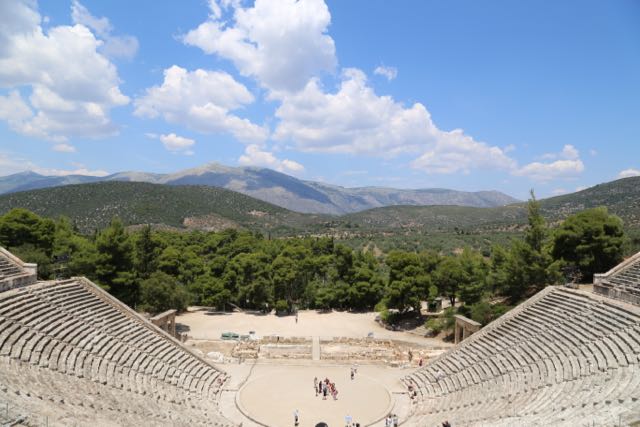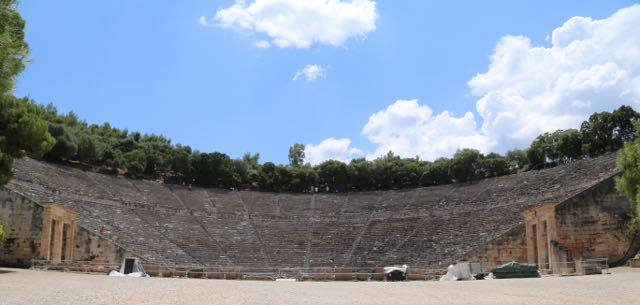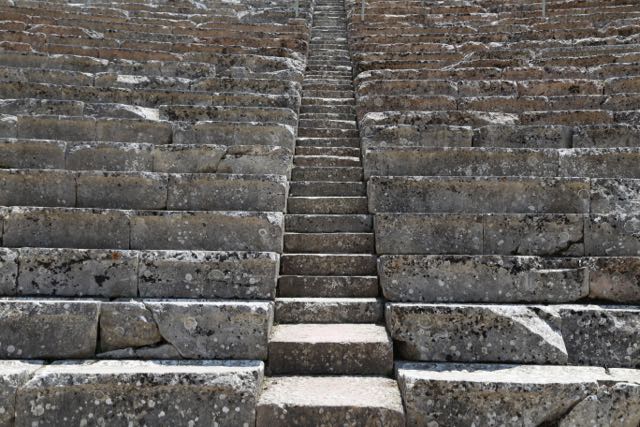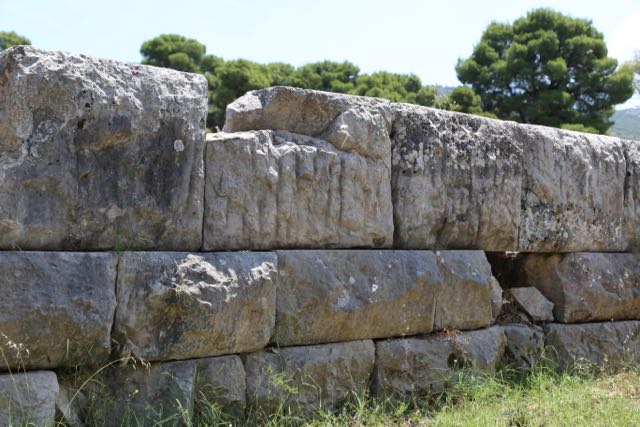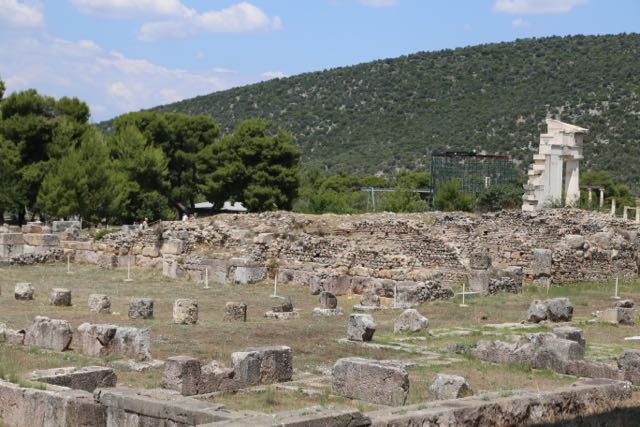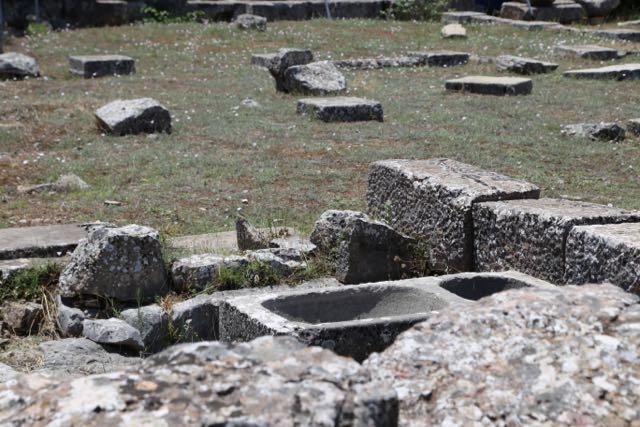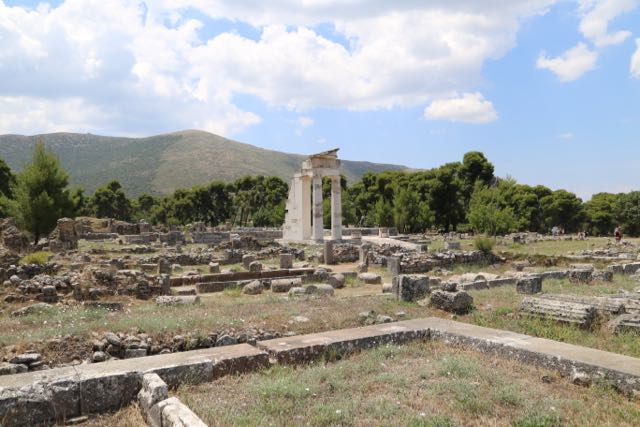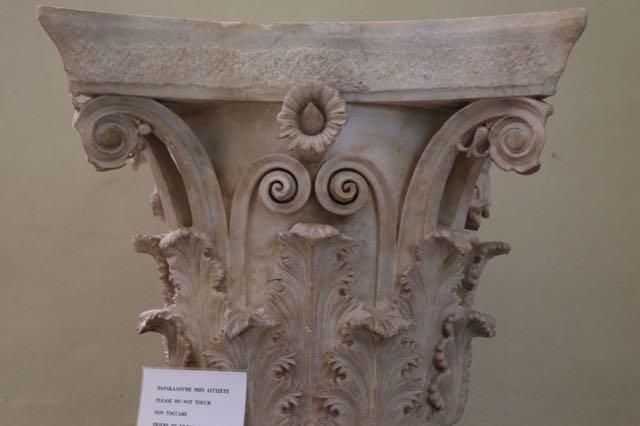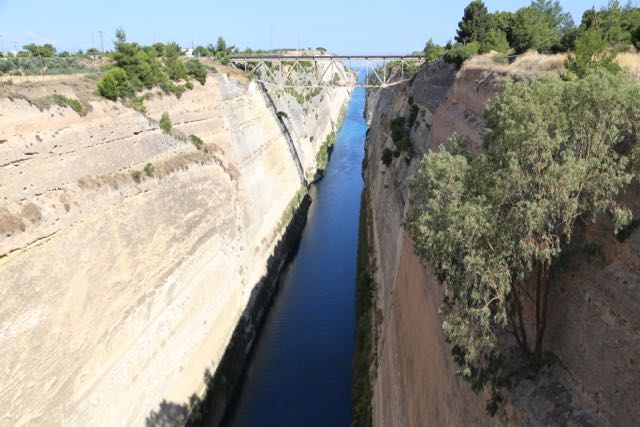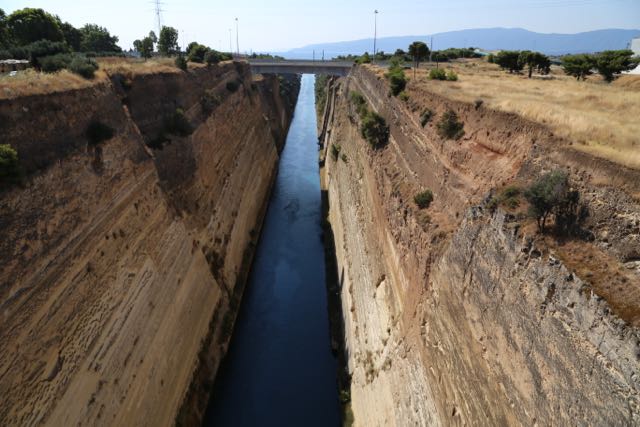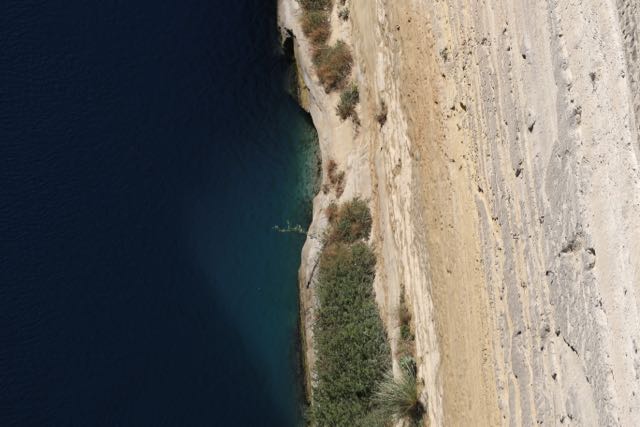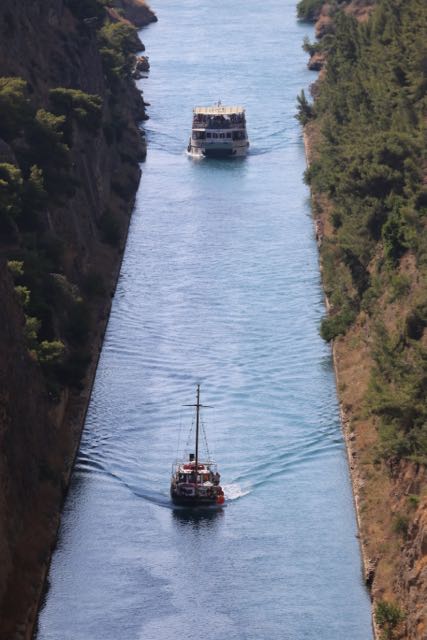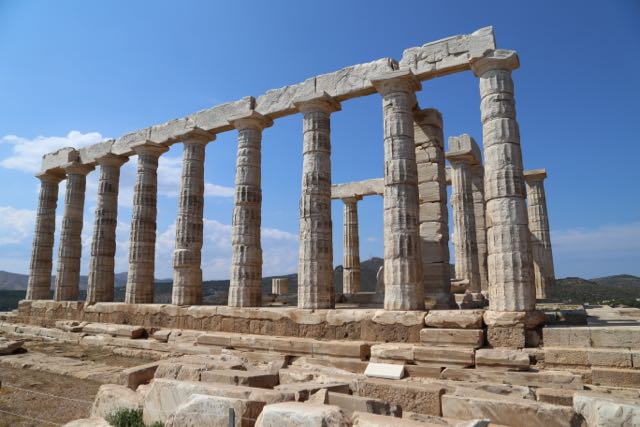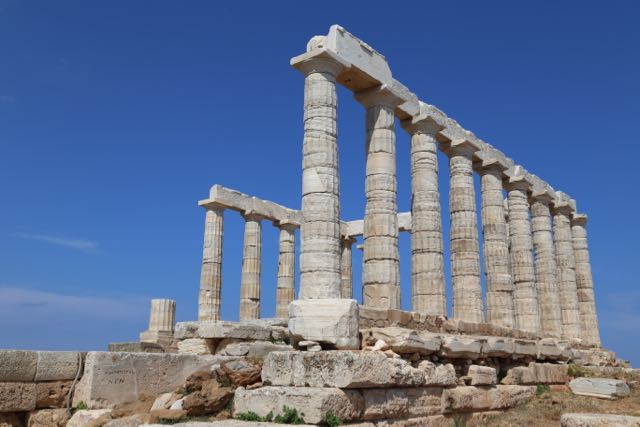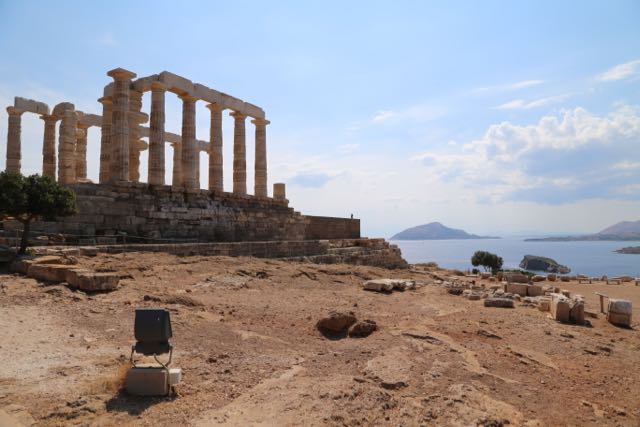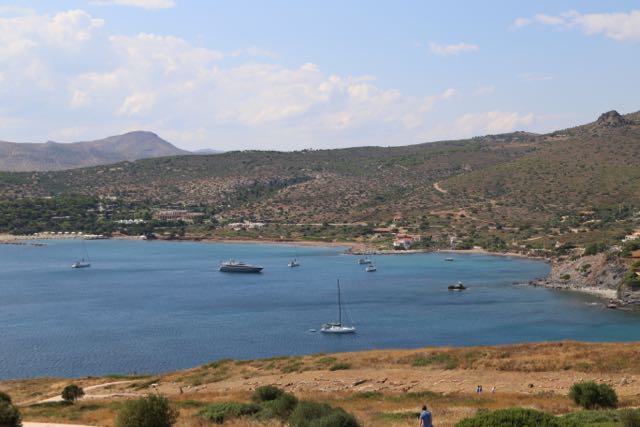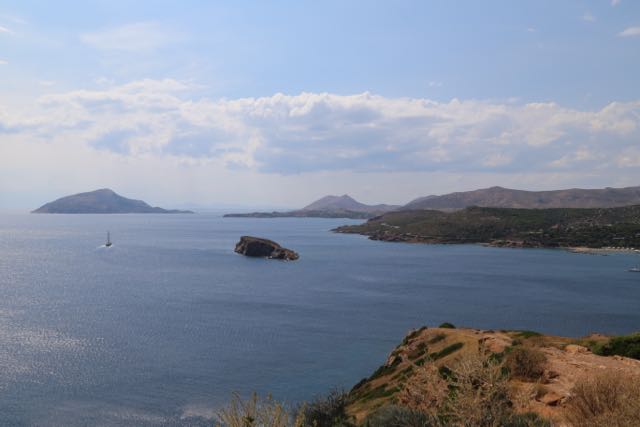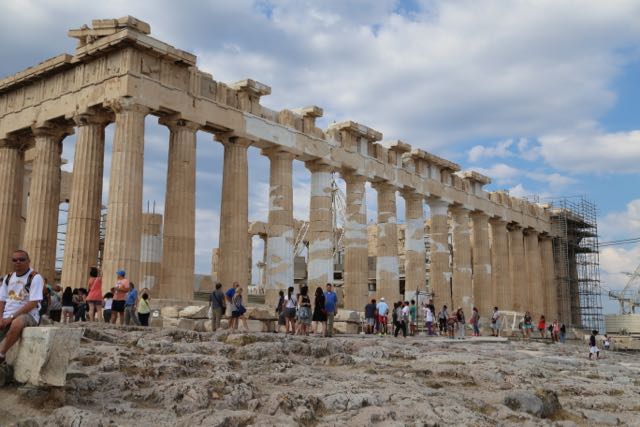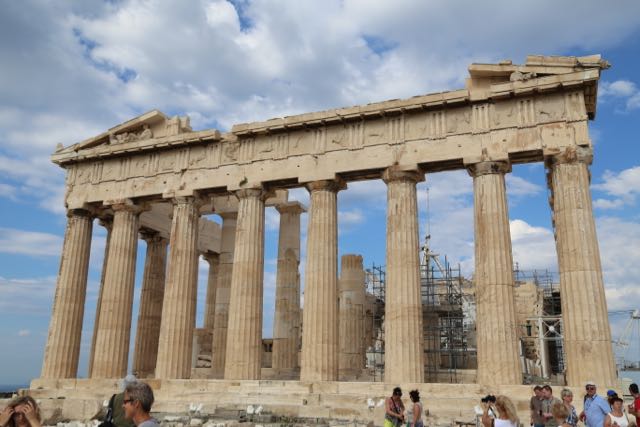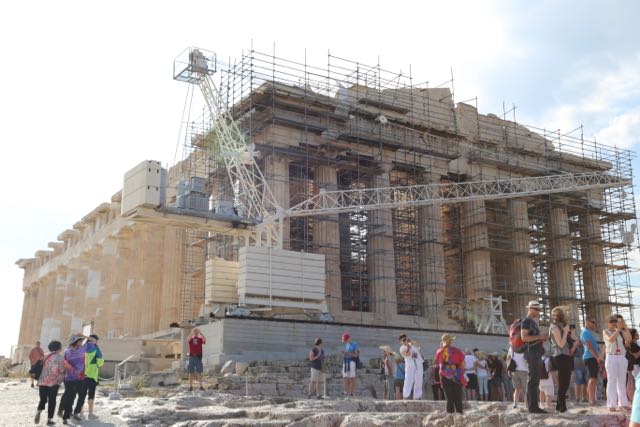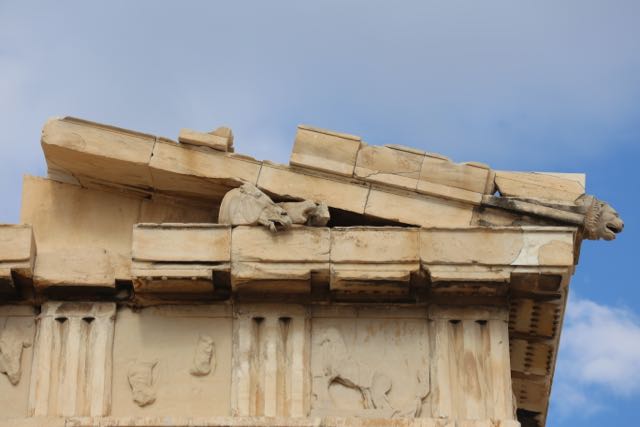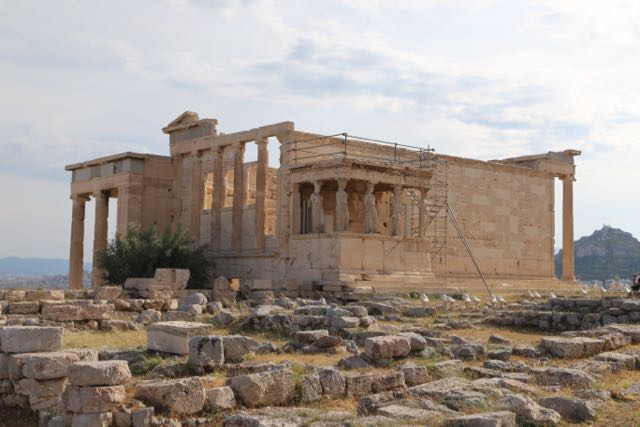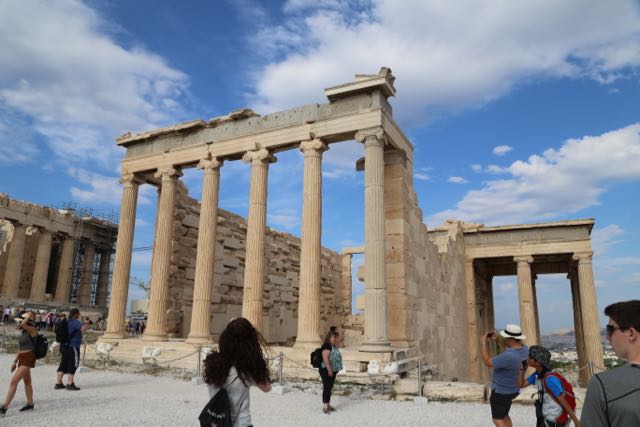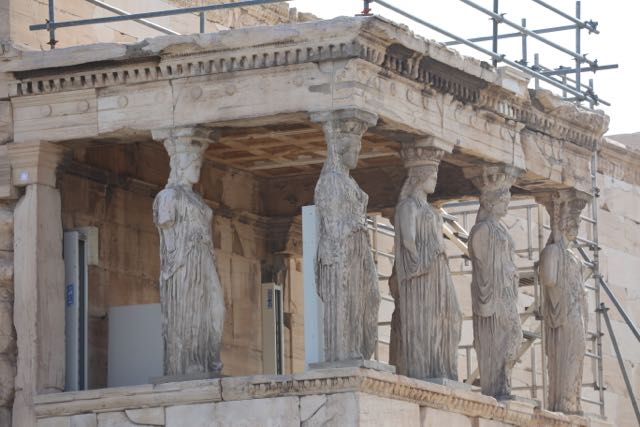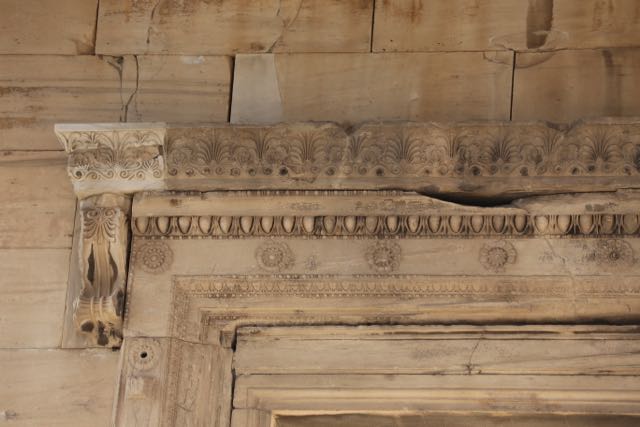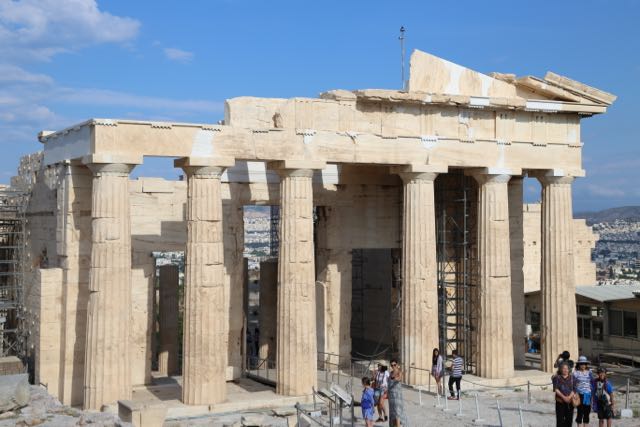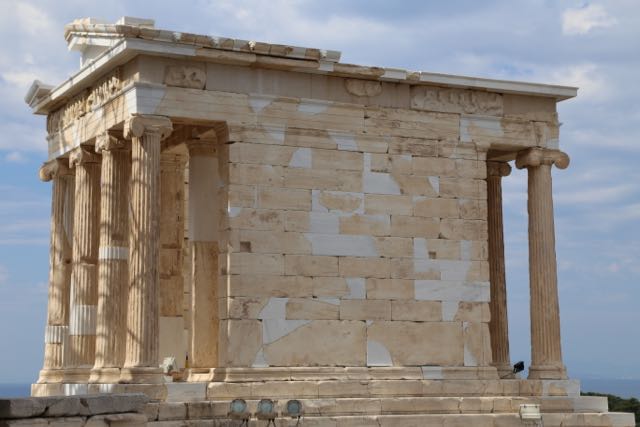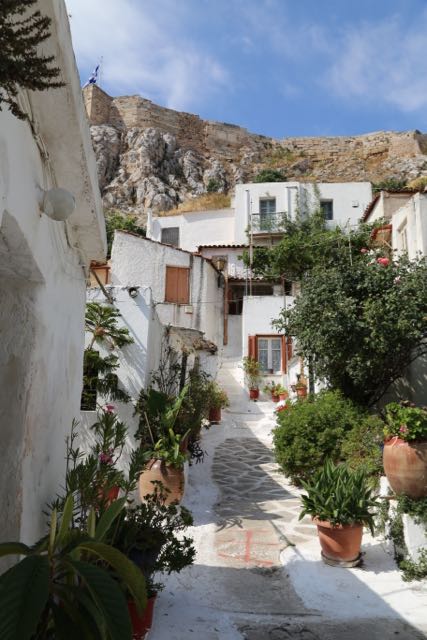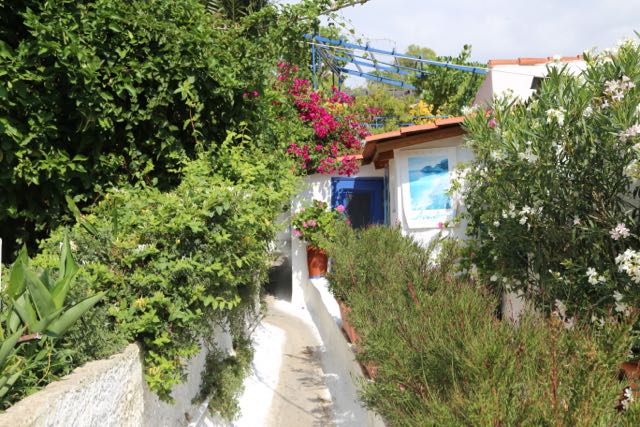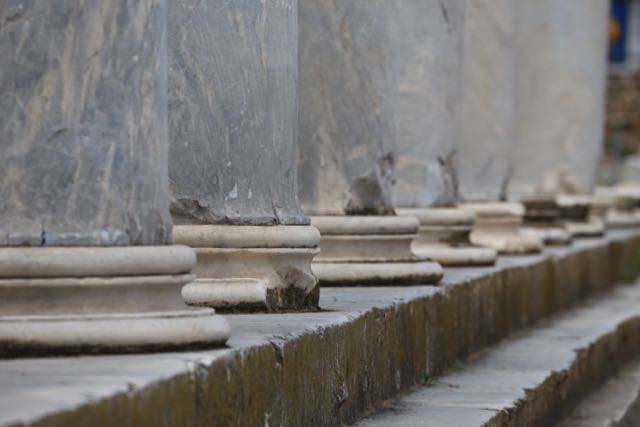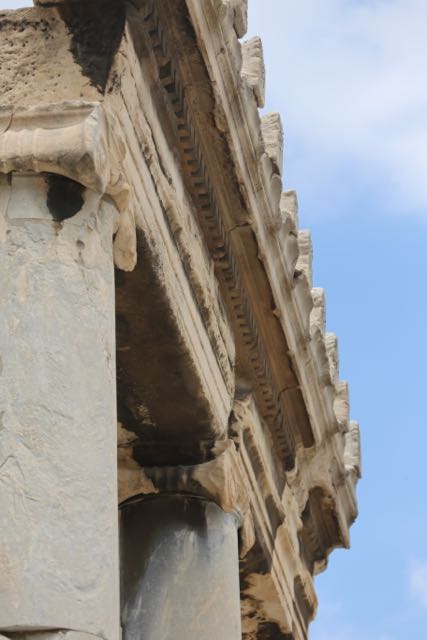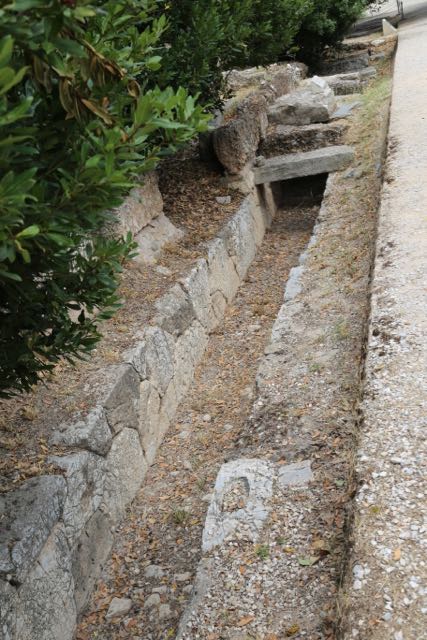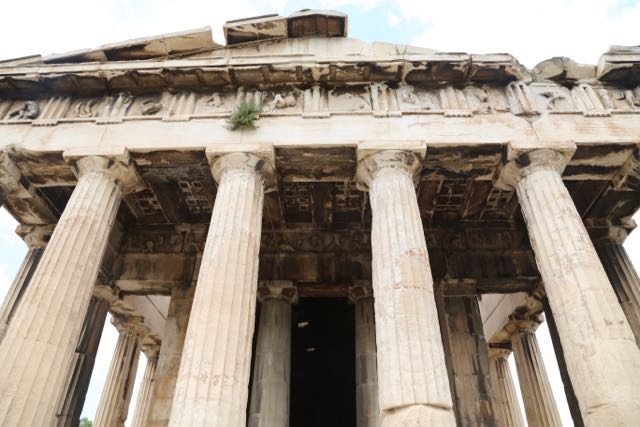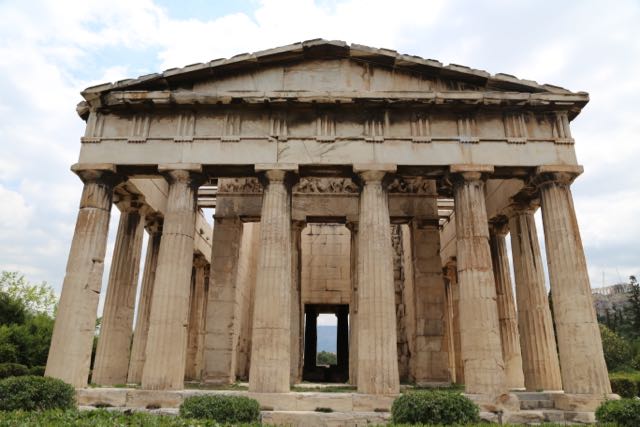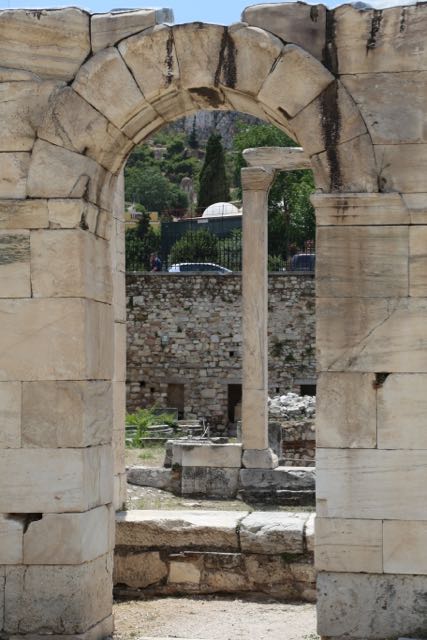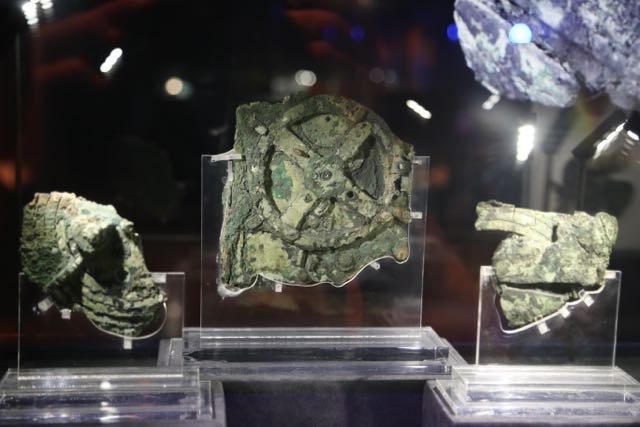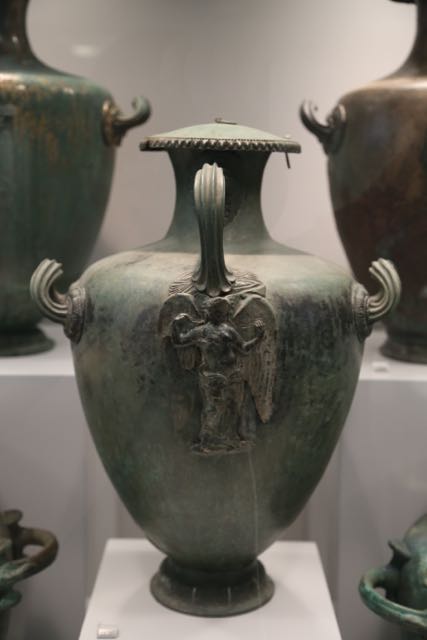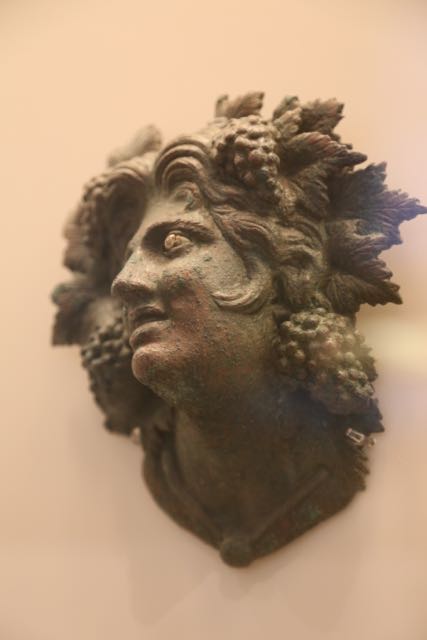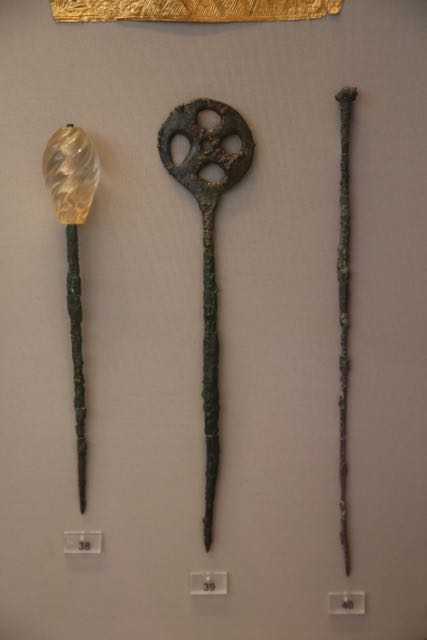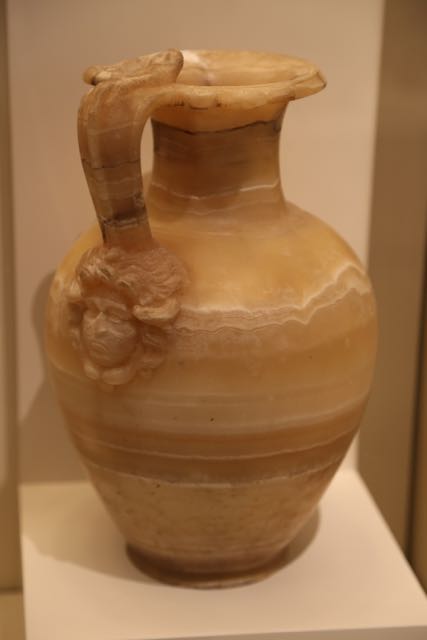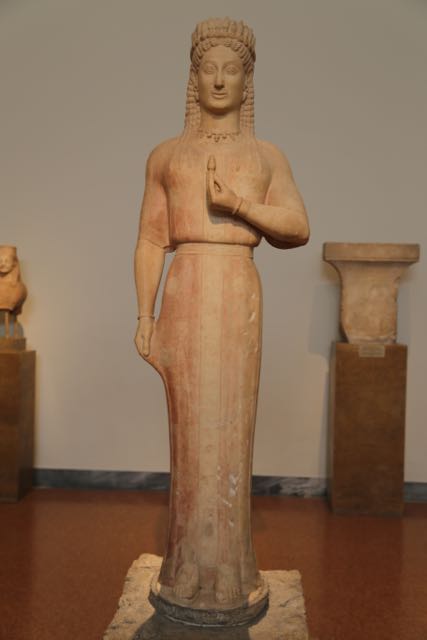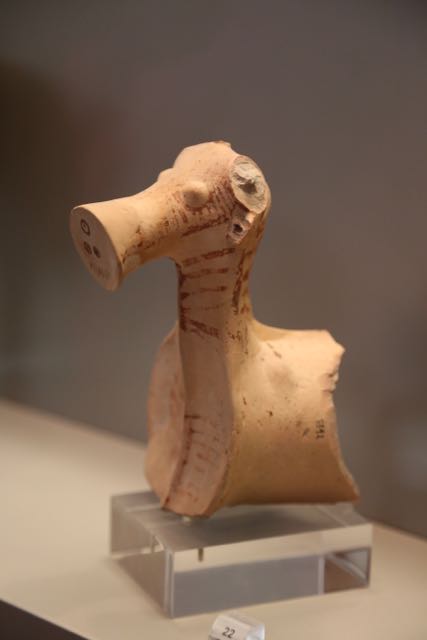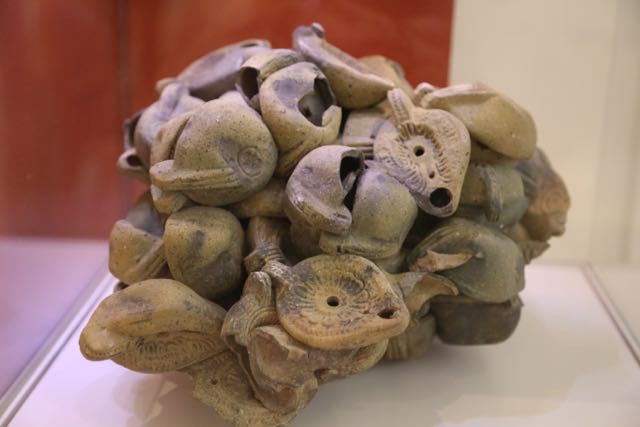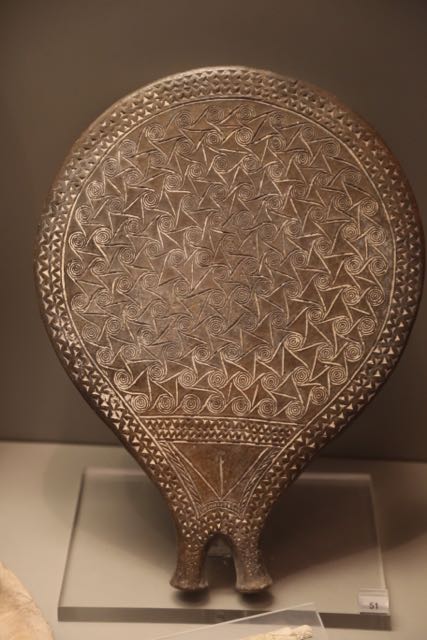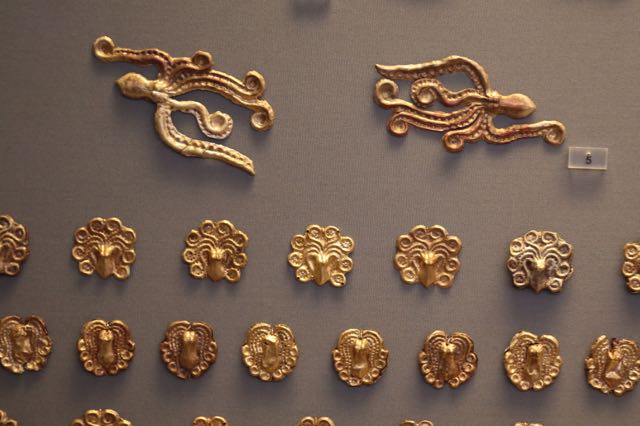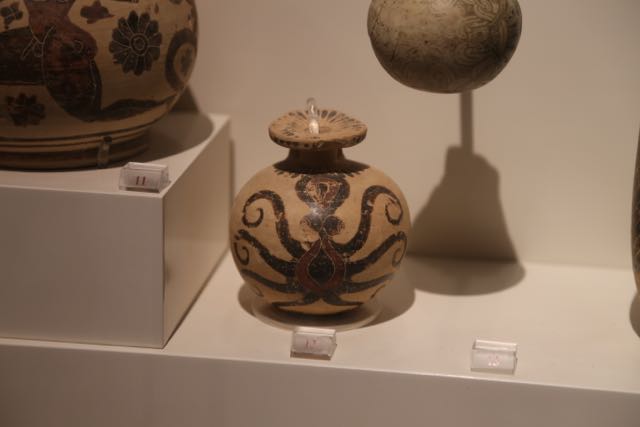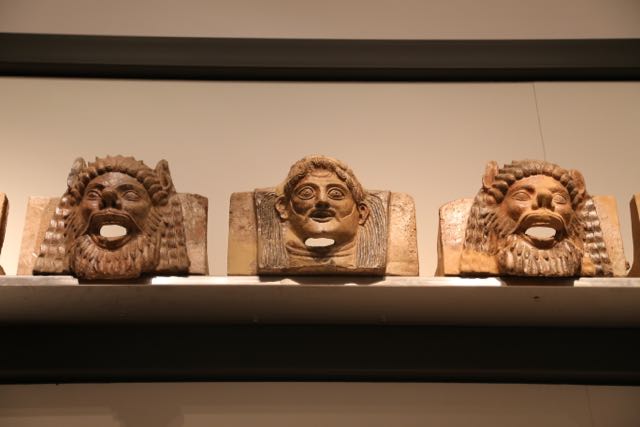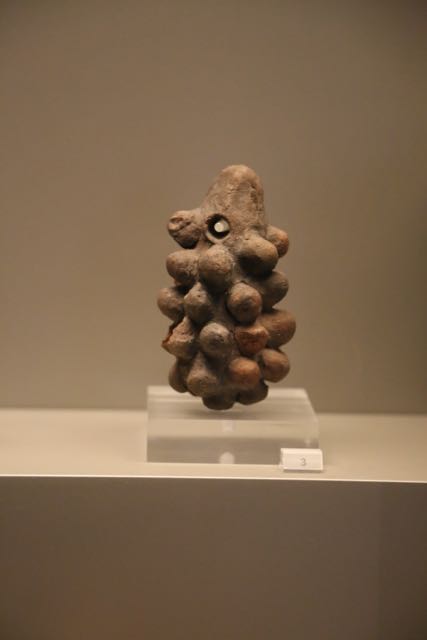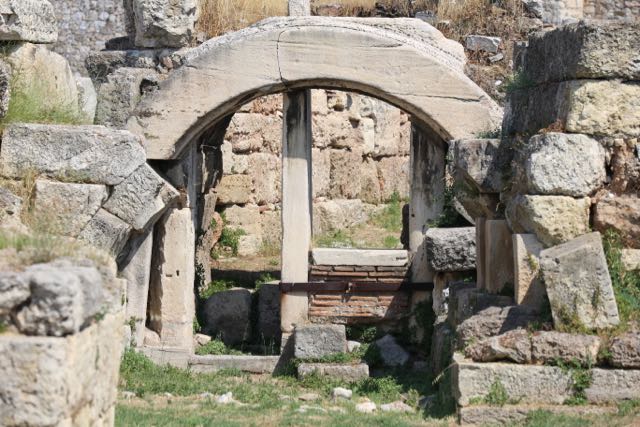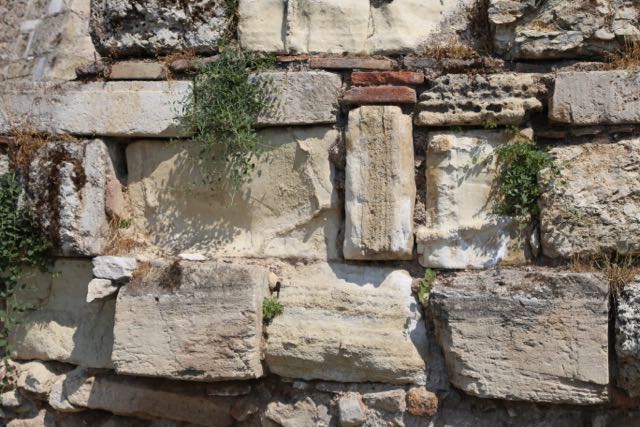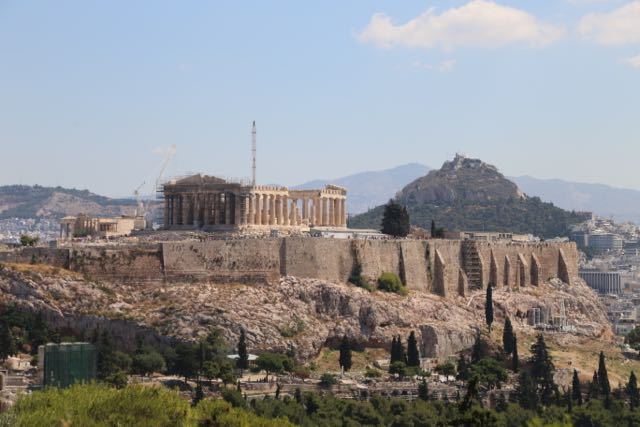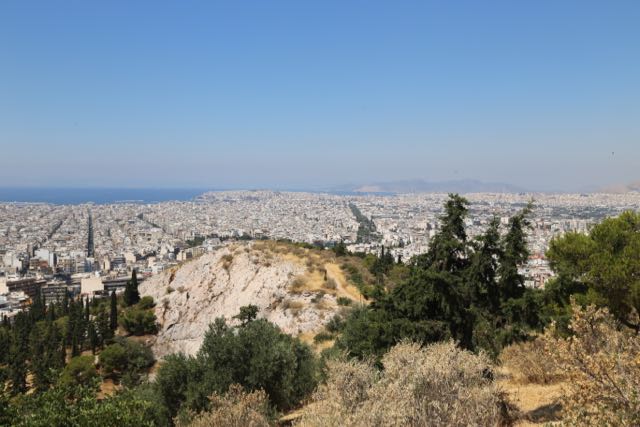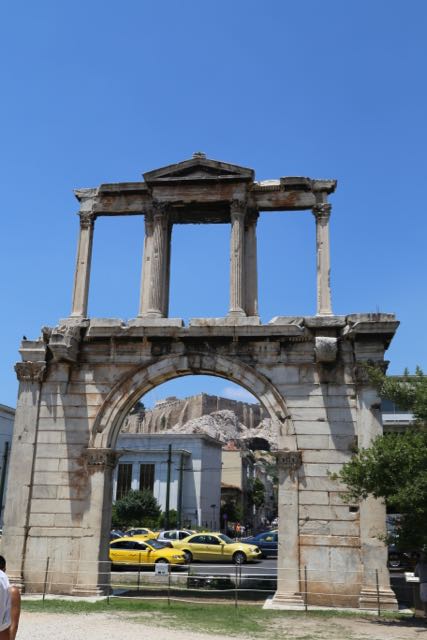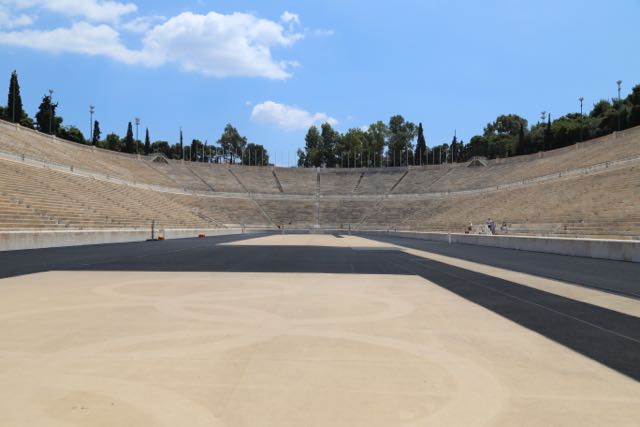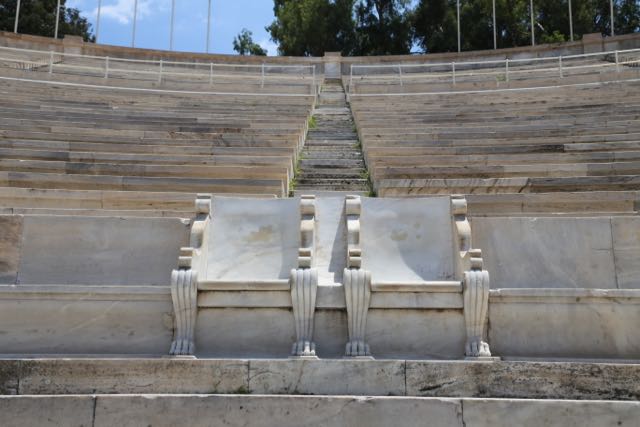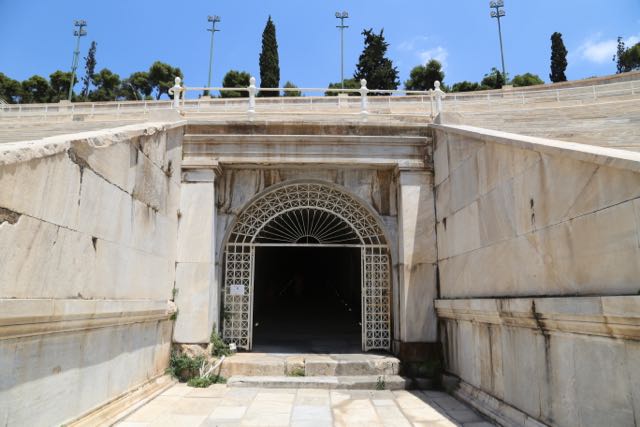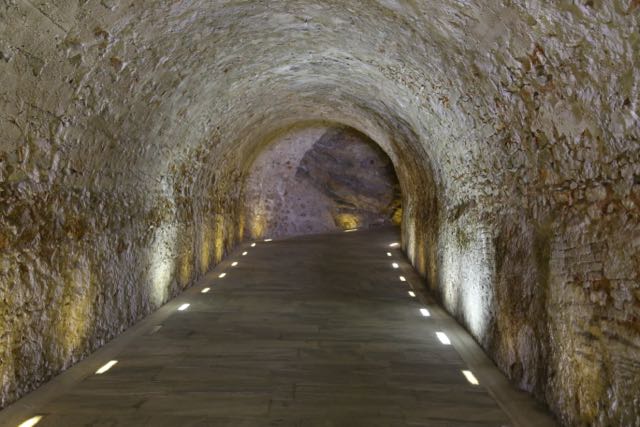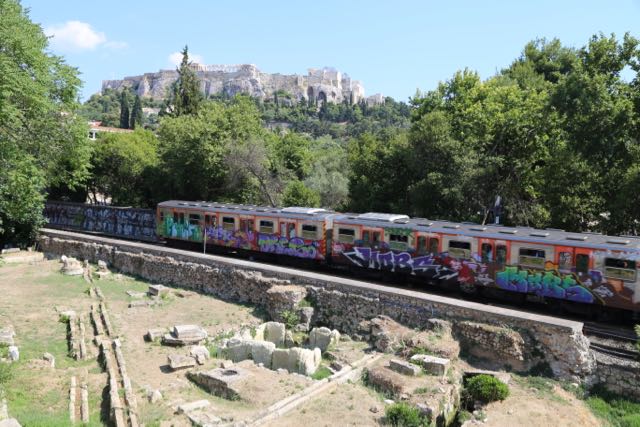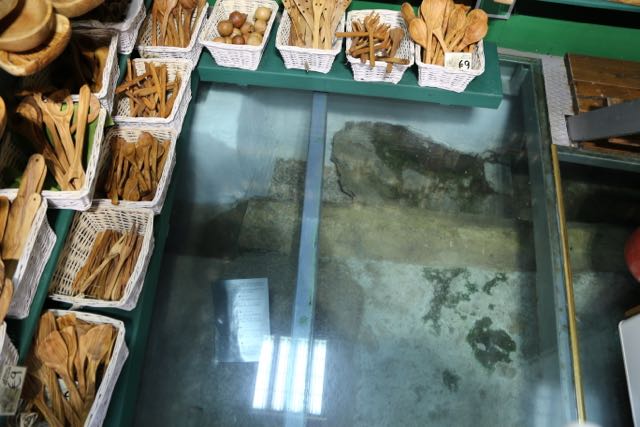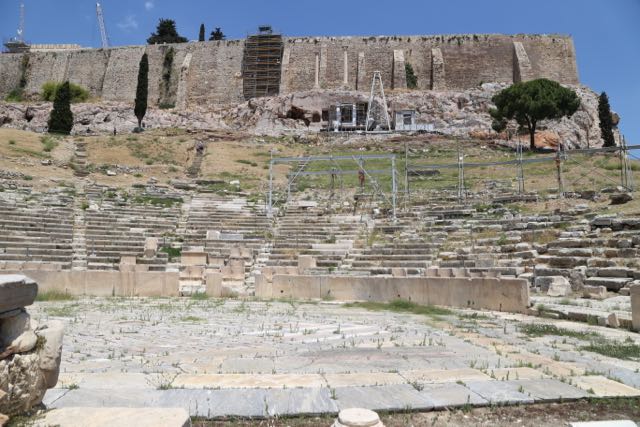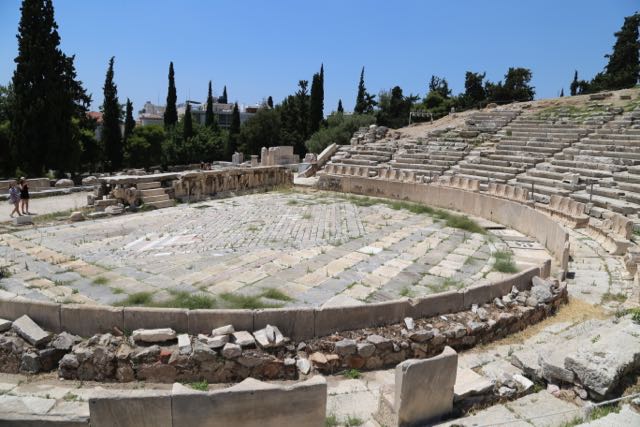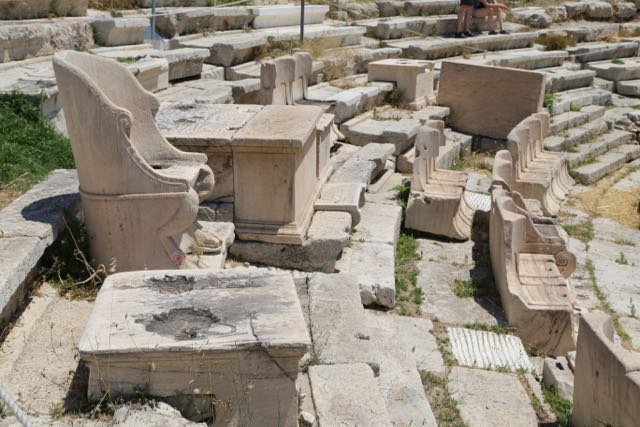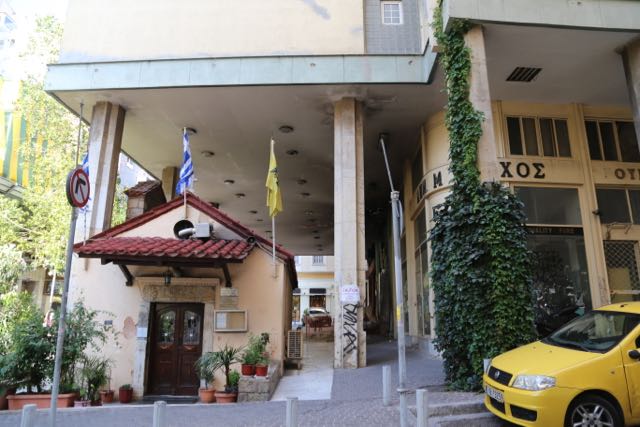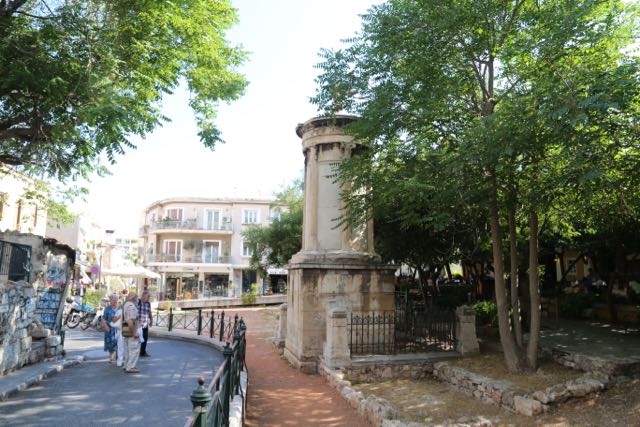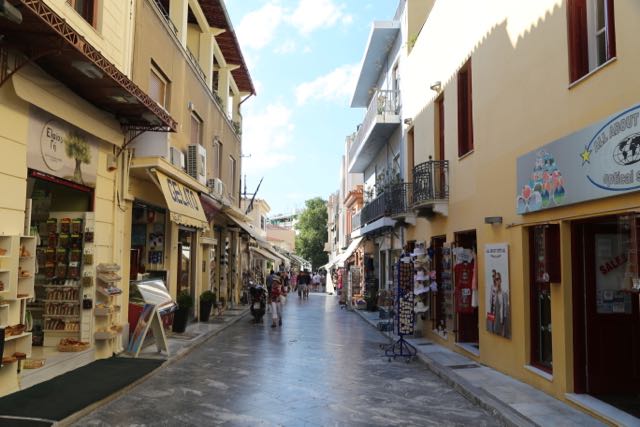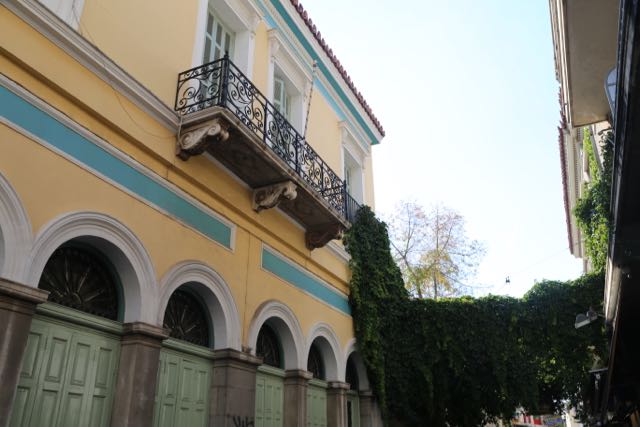After visiting the Corinth Canal, we stopped at Epidaurus to see the ancient Theater of Epidaurus and also the Sanctuary of Asklepios. The shrine of Asklepios, the god of medicine, became a site where ancient people came to seek healing or to ask for healing of other. The site also contains the fourth century theater, which is still in absolutely amazing condition. The acoustics of the theater are just astounding.
Tag Archives: Greece
Greece: Corinth Canal
I’m an engineer. If there is a canal, dam, bridge, or whatever engineering marvel anywhere around, I have to see it. Luckily, our tour group had the Corinth Canal on the itinerary. The Roman Emperor Nero originally tried to build a canal to link the Aegean Sea with the Gulf of Corinth, but it was too difficult, so back then, they just dragged ships across the isthmus. I wouldn’t want to do the dragging. The Corinth Canal was started in 1881. No locks, just a canal, but wow, what a cut.
Cape Sounion
This afternoon, the tour group I am with went to Cape Sounion, which southeast of Athens to see the Sanctuary of Poseidon. The trip was worth it just for the view during the ride and especially at Cape Sounion. The Aegean Sea is so amazingly beautiful and so blue.
Acropolis
I have now joined my tour group, and so my last full day in Athens was a bit of a save the best for last, in that the morning was spent at the Acropolis. It is such an amazing feat of ancient engineering. It is currently, and has been for a while, being restored through modern engineering. It was weird to see such ancient structures surrounded by modern structures like scaffolding and cranes, or really it was a juxtaposition I guess. It makes me wonder about the work conditions back then versus now. I think we already know a bit about the work conditions back then, but it still amazes me what they accomplished. The hill that the Acropolis is on is essentially solid rock, so they certainly picked the correct foundation on which to build the structures. I am still in awe though after having seen it.
Athens Day 4: Agora Ruins
I took a different route through Plaka to visit more sites, and I ended up climbing partially up the Acropolis hill and winding through a little neighborhood filled with cute little adobe-like houses that I associate with the Greek islands. Then I visited the Roman Agora, Ancient Agora, and Hadrian’s Library. The rest of the day was spent wandering through the National Gardens.
Athens Day 3: Artifacts and More Ruins
I spent the majority of the day at the National Archaeological Museum, which has an amazing collection of artifacts. Being a nerd, the highlight for me was the Antikythera Mechanism. However the stone, pottery, glass, and metal artifacts were amazing too. I could have spent more time there, but there are only so many vases and sculptures I can look at in one time period.
A few photos of some of my favorite things in the museum, starting of course with the Antikythera Mechanism. After seeing it, I am very impressed with whoever made it and also with the modern scientists that have been able to understand what it did, at least on some level.
There were lots of metal sculptures and other items.
There was also amazing carved stone items.
The below was labeled as a bull figure. I think it looks like a cross between a seahorse and real horse.
Below may be one of my favorite pieces. Take heart all artists and craft people, especially if you are like me and go through many trials before getting something right, some day your failed pieces may end up in a museum!
This frying pan was labeled as something that would buried with someone. I would rather not be buried with a frying pan, no matter how pretty.
They were very big on the octopus in metal pieces and painted on pottery. I love cephalopods, so I thought this was really neat.
The roof spouts cracked me up.
This piece was labeled as “clay artifact in the form of bunch of breasts or multi-cluster fruit. Probably symbol of fertility.” When I first saw this, I thought it was supposed to be a bunch of grapes or perhaps a pine cone. No where in my guesses was bunch of breasts. I don’t know if that says more about my ignorance of artifacts, my imagination, or perhaps the thought process of the archaeologists studying this, whom I am going to go out on a limb and guess are mostly men.
Afterwards, I went to the Archaelogical site of Keramikos to view yet more ruins. This was a nice site because it was not jammed packed with people, and I could just wander around the ruins or really all the walls.
Athens Day 2: Ruins and Hills
I started off the day by hiking up Filopappou Hill because I heard it had great views. It does! You can see all the way to the sea to the south, and it allows wonderful views of the Acropolis as well as most other parts of the city. While up there, I saw the Filopappos Monument and did a little birding. Then I pushed on to see as many historical sites as possible including Theatre of Dionysos, Hadrian’s Arch, Temple of Olympian Zeus, Panathenaic Stadium, and a few smaller ones that are scattered everywhere. I am not kidding about this. You turn a corner, and there is a very small archeological site. I walked into a store selling everything made from olive wood and realized I was standing on a glass floor and below was ruins, complete with a sign describing them.
It was rather fun to get to wander around Panathenaic Stadium because it was used for the Olympics, yet it is a historical site with stone seats, some of which look like the stone seats at the Theatre of Dionysos. As an engineer, I am in awe that these structures have lasted so long. Some have had to be restored, and the Acropolis is currently case in point. As much as I would love to get photos of it unobstructed from construction equipment, I am kind of amused to see this ancient engineering structure being restored with modern engineering.
Athens Day 1: Plaka
I got to my hotel a bit before 5 pm, and even though I got no sleep on the plane, I headed right back out to walk around the city a bit. I mainly walked around Plaka, which is one of the old sections of town. I have decided it is not possible to see Athens without getting lost in Athens, or at least in Plaka. I thought Boston had crazy streets, but I don’t even know what was going on in Plaka. Luckily there are monuments or ruins every other block. I would get lost every third block or so because I could never figure out what street I was on, but I only had to walk a few blocks before running into another ruin or monument, so I could quickly figure out in general where I was again using a tourist map. To a certain extent, I was just looking around buildings to find where the Acropolis was, and then used that to navigate directionally. Also, the sidewalks are tiny, so people walk on the streets, but the scooters also drive on the sidewalks, so that seems fair. Cars also drove down alleys that it was not clear to me were actually streets, but evidently they were. I already love this city though. I got lost, but it is just a glorious city in which to get lost.

